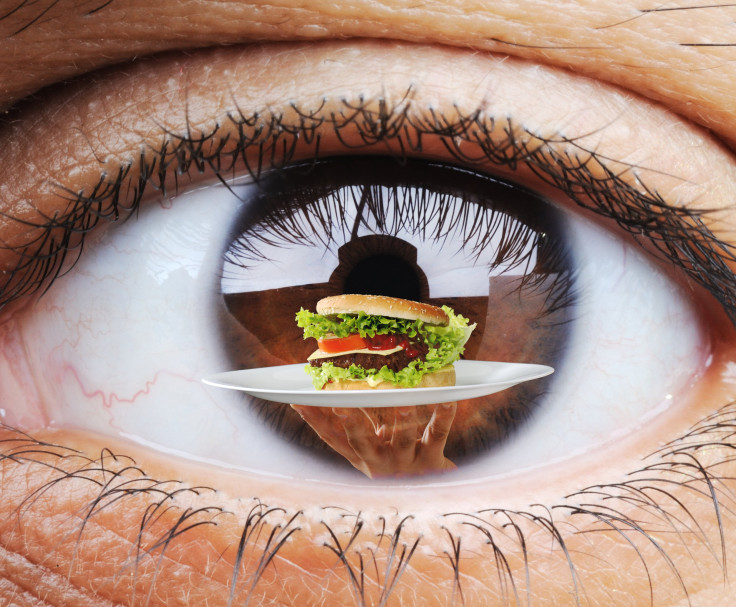Hunger Pain Hurts, Drives Eating, And May Lead To New Weight-Loss Drugs

Hunger is the Achilles' heel of millions of dieters across the country. An estimated 45 million Americans try diets and spend $33 billion on weight loss products to help them on their journey to health every year, and 95 percent of the time they fail. In an attempt to understand why, for over 20 years a team of researchers from Beth Israel Deaconess Medical Center have been untangling the complex neurocircuitry of the brain to understand hunger, feeding, and appetite. Their study, published in the journal Nature Neuroscience, pulls the curtain back on how a network of neurons works to undo your diet with calorie-dense cravings.
"One reason that dieting is so difficult is because of the unpleasant sensation arising from a persistent hunger drive," the study's co-author Dr. Bradford Lowell, a professor of medicine at Harvard Medical School, said in a press release. "Our results show that the artificial activation of this particular brain circuit is pleasurable and can reduce feeding in mice, essentially resulting in the same outcome as dieting, but without the chronic feeling of hunger."
Hunger is the hard-to-ignore grumbling pain that serves as a warning that energy reserves are low and sustenance is needed to avoid starvation. What is that intense pain and why is it so difficult to ignore? The team has finally discovered the brain circuit melanoncortin 4 receptor-regulated (MC4R), the link that controls eating, promotes fullness, and turns hunger pains on and off. They also found the Agouti-peptide-expressing (AgRP) neurons that are designed to detect caloric deficiency and send a person on a primal hunt for food.
"When these AgRP neurons are 'turned on,' either by fasting or by artificial means, laboratory animals eat voraciously," Lowell said. "Determining the identity of these 'satiety' neurons is the key to establishing the blueprint for how the brain can regulate appetite. It was an important missing point of connection in the wiring diagram."
The epicenter of Lowell and his team’s research is the phenomenon of “Drive Reduction,” commonly known as the feeling that leads you to eat just to get rid of the unpleasant feeling of hunger. Researchers watched AgRP hunger neurons send out signals to block the MC4R, ultimately revealing how the brain regulates hunger and feeding behaviors.
“When we start to lose five percent, or 10 percent of body weight, that’s when these neurons are kicking in,” said the study’s lead researcher Scott Sternson from Howard Hughes Medical Institute. “And they are a big part of why most diets fail even though people do succeed in initially losing weight.”
Interrupting the AgRP neurons is neither the safest nor fastest way to support weight loss because it’s also in charge of conserving energy by burning fewer calories. It tells the nervous system to slow heart rate and lower blood pressure, which makes it work less efficiently and ultimately save energy. Instead, Lowell believes if they could turn on the flow of MC4R neurons it would also decrease the amount of work AgRP neurons expel, creating artificial satisfaction. Researchers still need to explore the possibilities, but they’re closer than ever to turning off a diet’s worst enemy — hunger pains.
Source: Lowell B, Garfield A, Krashes M, Li C, Madara J, and Shah BP, et al. A neural basis for melanocortin-4 receptor-regulated appetite. Nature Neuroscience. 2015.



























